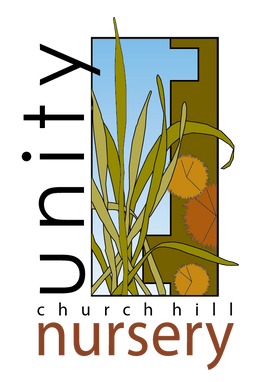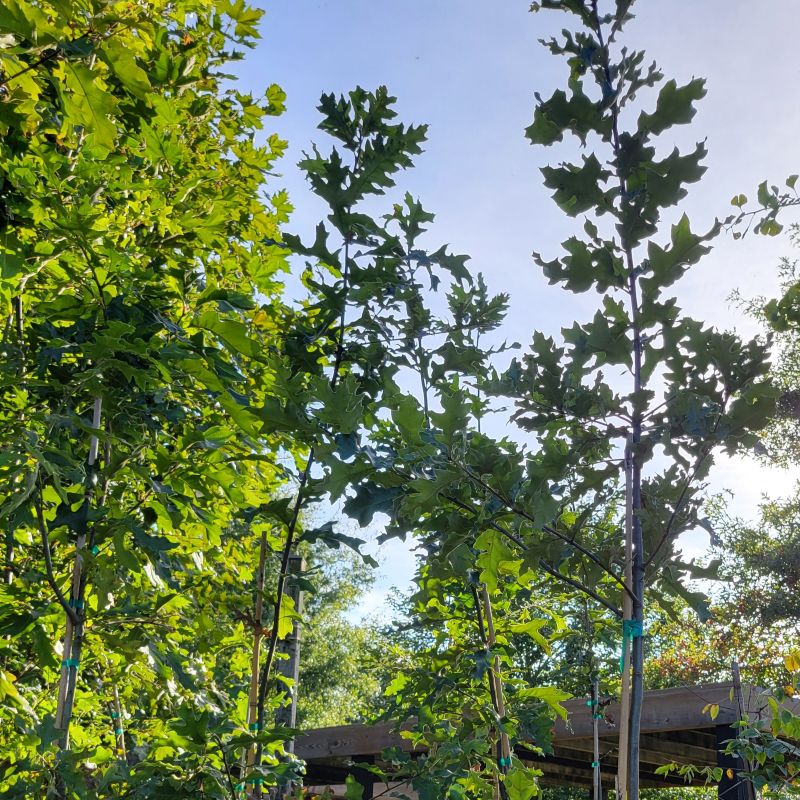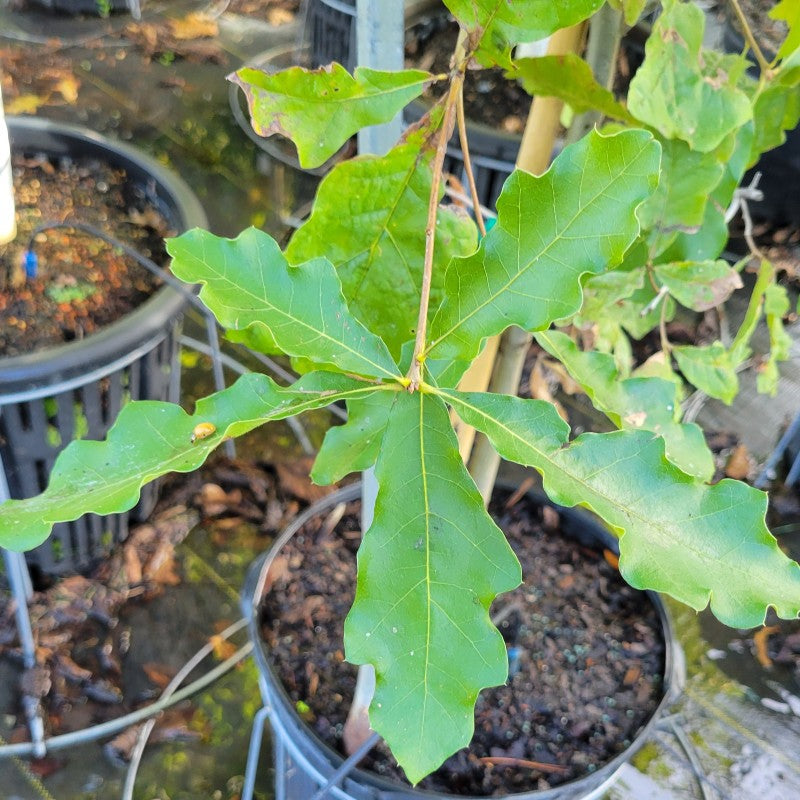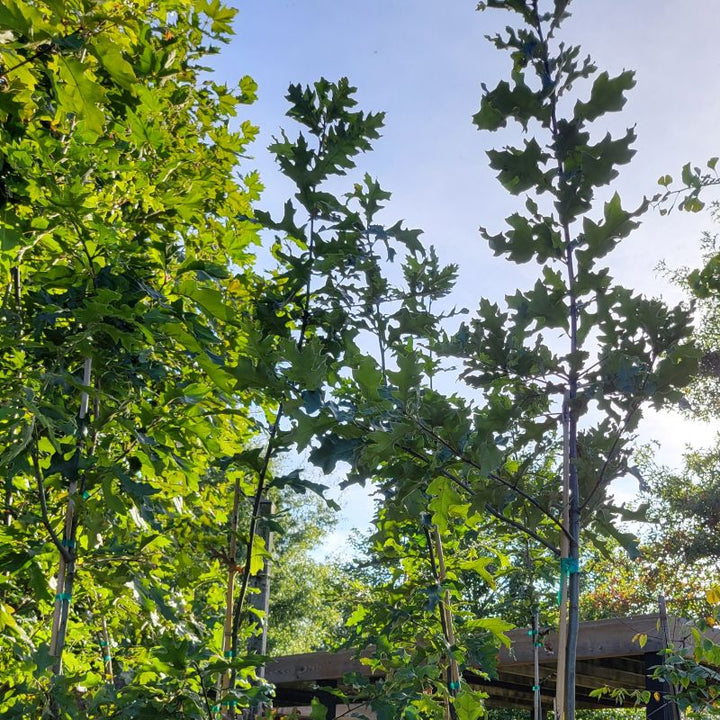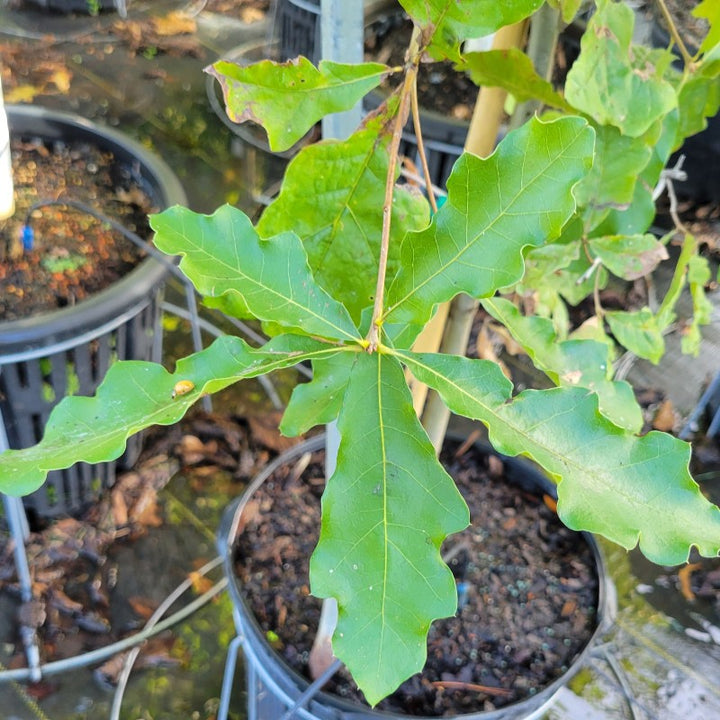Quercus falcata (Southern Red Oak)
- Low stock - 7 items left
- Inventory on the way
Quercus falcata, also called southern red oak or Spanish oak, is a large oak tree in the red oak group, a common grouping of oaks based on the color of their fall foliage. With both common names referring to its American range ('Spanish oak' referring to its location in former Spanish colonies), Quercus falcata is found throughout much of the American southeast and can be found growing to towering heights of 80' to over 100' tall in the wild, though it typically grows to only 60-80' tall in yard settings, with a slightly more narrow spread. As an oak, Quercus falcata produces plain, rounded acorns, but first fruit doesn't typically appear for 20 to 25 years, and southern red oaks only begin producing larger amounts of acorns when they reach full maturity around 40 to 50 years of age.
Quercus falcata is typically planted for ornamental or ecological uses, but is a relatively hardy species once established, capable of withstanding drought, dry soil, and air pollution. Fall foliage makes it a great pick as a specimen tree, while overall shape and large habit makes it excellent as a summer shade tree. While occasionally messy, acorns are ecologically valuable to a number of species including a number of insects as well as white-tailed deer, wild turkey, blue jays, and various species of small mammal and waterfowl. In addition to acorn value, many Quercus species are regarded as important keystone plants for their support of larval butterflies and moths, and Quercus rubra is no different; red oak is a host to the caterpillars of several species of duskywing moth and hairstreak butterfly, including the endangered hickory hairstreak (Satyrium caryaevorus).
A famous southern red oak, called the Queen Anne's County Oak, grew to 200 years old with a spread of over 100' before it was felled by a tornado in 2017.
